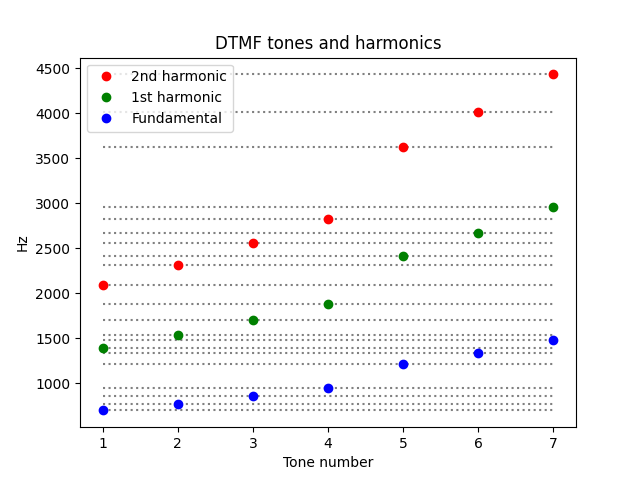Keenan Pepper left a comment on my previous post saying that the DTMF tones used by touch tone phones “are actually quite close to 14 equal divisions of the octave (rather than the usual 12).”
Let’s show that this is right using a little Python.
import numpy as np
freq = np.array([697, 770, 852, 941, 1209, 1336, 1477])
lg = np.log2(freq)
spacing = lg[1:] - lg[:-1]
print(spacing)
print([2/14, 2/14, 2/14, 5/14, 2/14, 2/14])
If the tones are evenly spaced on a 14-note scale, we’d expect the logarithms base 2 of the notes to differ by multiples of 1/14.
This produces the following:
[0.144 0.146 0.143 0.362 0.144 0.145]
[0.143 0.143 0.143 0.357 0.143 0.143]
By dividing the octave into 14 points the DFMT system largely avoids overlap between the set of tones and the set of their harmonics. However, the first overtone of the first tone (1394 Hz) is kinda close to the fundamental of the 6th tone (1336 Hz).

